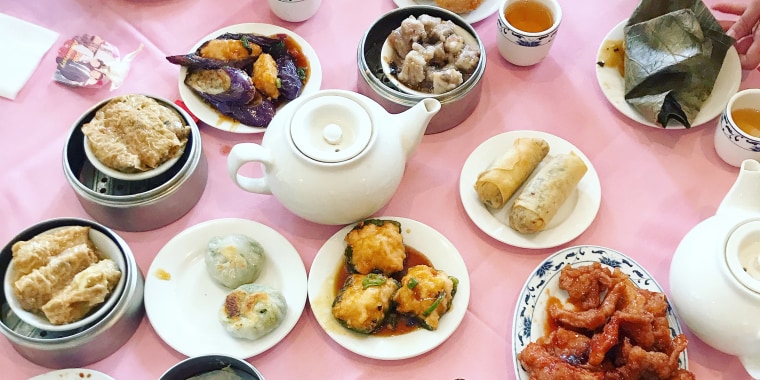During Asian Pacific American Heritage Month, TODAY is sharing the community’s history, pain, joy and what’s next for the AAPI movement. We will be publishing personal essays, stories, videos and specials throughout the entire month of May.
Throughout the pandemic, my family, like so many others, have missed so many in-person experiences, but there is one that we have missed most of all: going to dim sum.
Dim sum translates to “touch the heart” in Cantonese — and it really does just that.
It was actually one of the last things I did with my entire family before COVID-19 hit. We decided to surprise my parents for their 50th anniversary at one of our favorite spots, Central Seafood, in Hartsdale, New York. We had five tables of our relatives, filled with food, laughter and excitement for such a milestone. Little did we know at the time that it would be one of the last times we would be all together — or enjoy the full experience of dim sum — for a while.
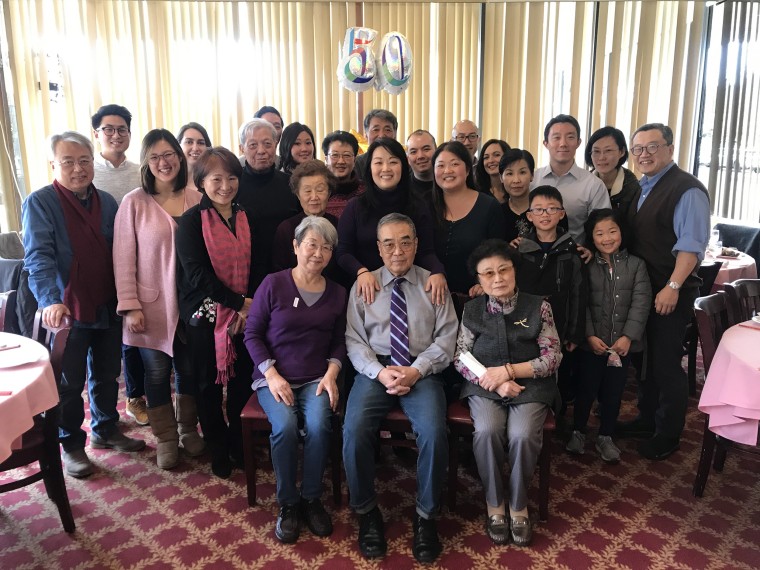
This Cantonese tradition can be traced back to the 19th century, to teahouses in the port city of Guangzhou, where Silk Road merchants would stop in for a meal. Starting in southern China and eventually making its way up to Hong Kong, dim sum was originally based on the idea of serving an assortment of local foods and evolved to include more foods from other areas of the country.
When my family gets dim sum, we place a huge order with everything from meat to vegetables to dumplings and beyond. My dad’s go-to order includes the steamed spareribs and clams in black bean sauce, and my mom will always get the Peking pork chops. My sister loves the flounder, garlic-sautéed Chinese broccoli, jian dui (sesame ball) and lo mai gai (lotus-wrapped sticky rice). My husband is a huge fan of fluffy char siu bao (barbecue-pork-filled bun) and zhaliang (fried dough rice roll), but we love the hot shrimp dishes most of all. His favorite is shrimp cheung fun (rice noodle rolls) doused with soy sauce, and mine are shrimp shumai (three plates of them, to be exact). And if it’s a special occasion, I’ll also order a whole Peking duck for us all to share and inevitably fight over the last shard of crispy skin. We pass the food around, wash it down with sips of hot oolong or jasmine tea, and finish the meal off on a sweet note with egg tarts.
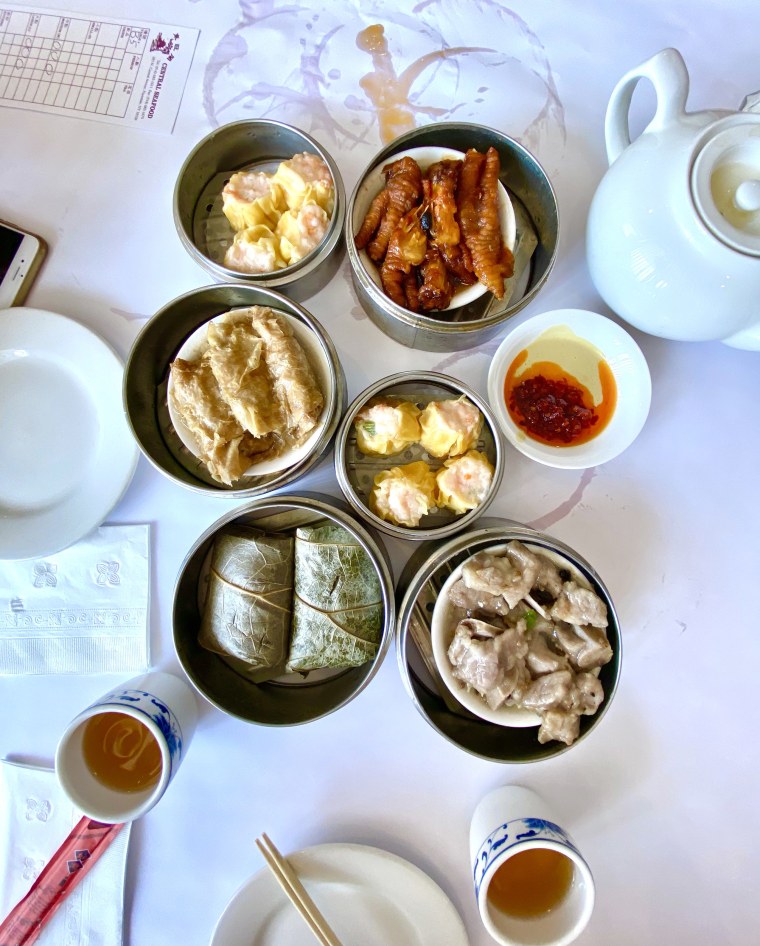
It sounds like a lot, but that’s truly the beauty of the dim sum experience — from the smells, sights, sounds and anticipation to the eventual piles of empty dishes on the table. It’s a ritual that has slowly but surely returned, but people are still yearning for the full experience.
“I think dim sum is an experience everyone should at least try once. I don’t recall many order dining experiences where so many different dishes are brought to your table to see first hand before you actually order it," Chris Ma, who grew up with and now manages his family’s restaurants, T.S. Ma, in both Wyckoff and Montclair, New Jersey, told me. "Things like that can expand the popularity of traditional Chinese dim sum dishes, especially with social media now. Someone posting about a cute dumpling that looks like a pig might be the reason more people try out a certain dim sum restaurant.”
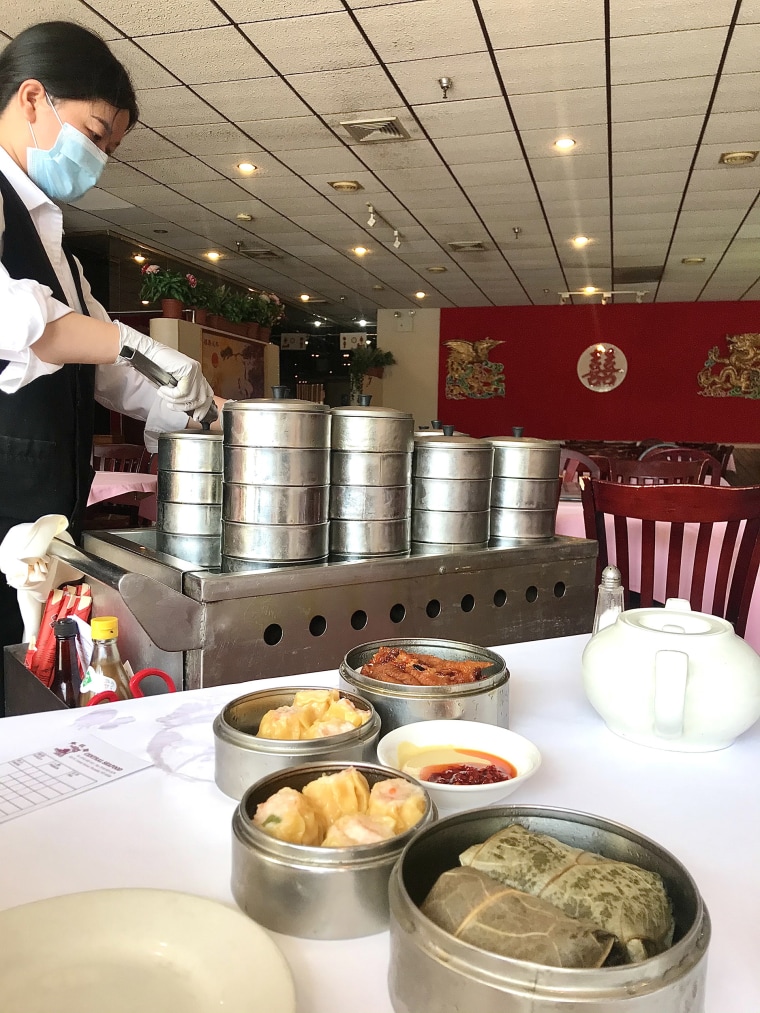
Many, like Chris’ wife, Pam, miss the variety of choices given. Once COVID-19 safety regulations were put into place in restaurants, the dim sum ordering process went from stacks of covered plates on wheeling carts to lists on paper.
"Even the change from the push-cart ladies to ordering from a paper menu — I liked the anticipation of seeing what’s inside this cart coming up," she said. "Some chefs would get creative and innovate from standard fare. If you see it offered in the cart you might want to try it. If it’s hidden on a paper menu list, you may overlook it and miss out.”
It’s also the social aspect that people seem to miss the most — just being in the room where it all happens. Grace Young, cookbook author, Cantonese cuisine preservationist and co-creator of the #SaveChineseRestaurants campaign, says she misses the group experience.
“I miss being seated at a big round table with family and friends in a crowded and noisy dim sum dining room," she said. "It was always a wonderful communal dining experience, and it made me happy to see all the families around me with grandparents, parents and children all enjoying a meal together … It’s so fun to watch the wondrous parade of dim sum come out of the kitchen!”
Ann Chiu, a a college librarian based in Portland, Oregon, misses going with her family to HK Cafe. It was a tradition to do dim sum especially with her husband, Alex’s, family. “It’s a chance to see aunties and uncles outside of holidays. I love eating in a circle and getting food from the center of the table. I miss having chicken feet with others in a crowded space!”
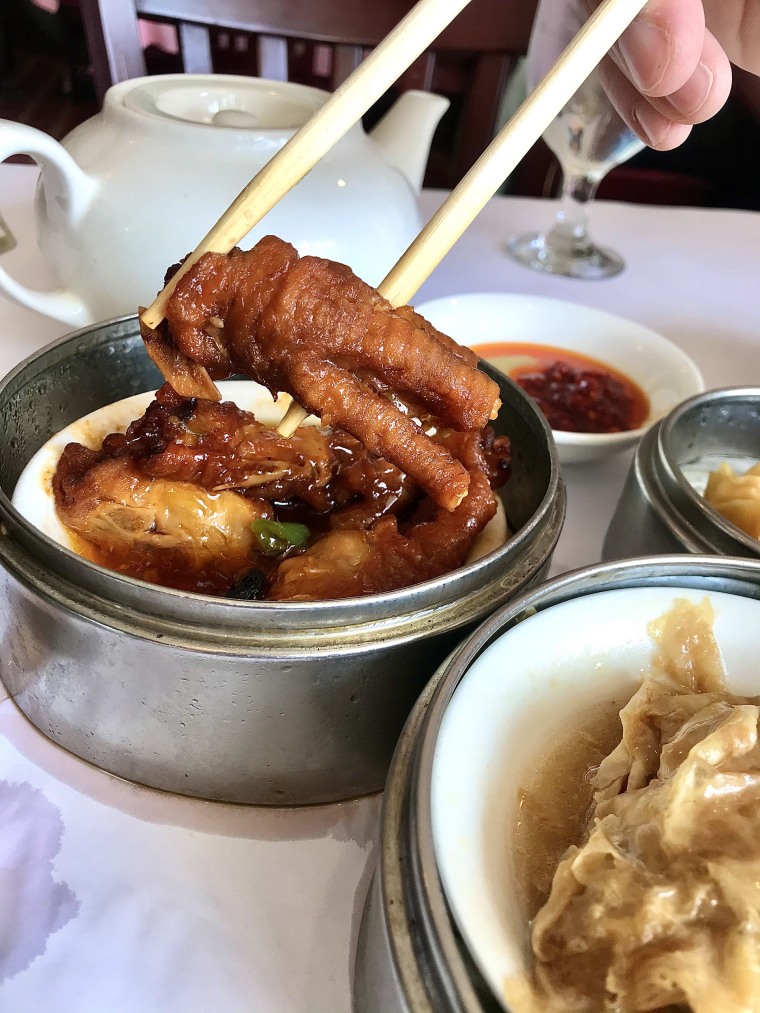
Grace Lin, bestselling author and illustrator of the book, “Dim Sum For Everyone," emphasized the importance of exposing kids to dim sum at a young age. “Dim sum is particularly magical for young children," she said. "It gives them the opportunity to choose their own food. This might seem like a small, ordinary thing, but put in the context of a small child. it is a moment of wonder and empowerment.”
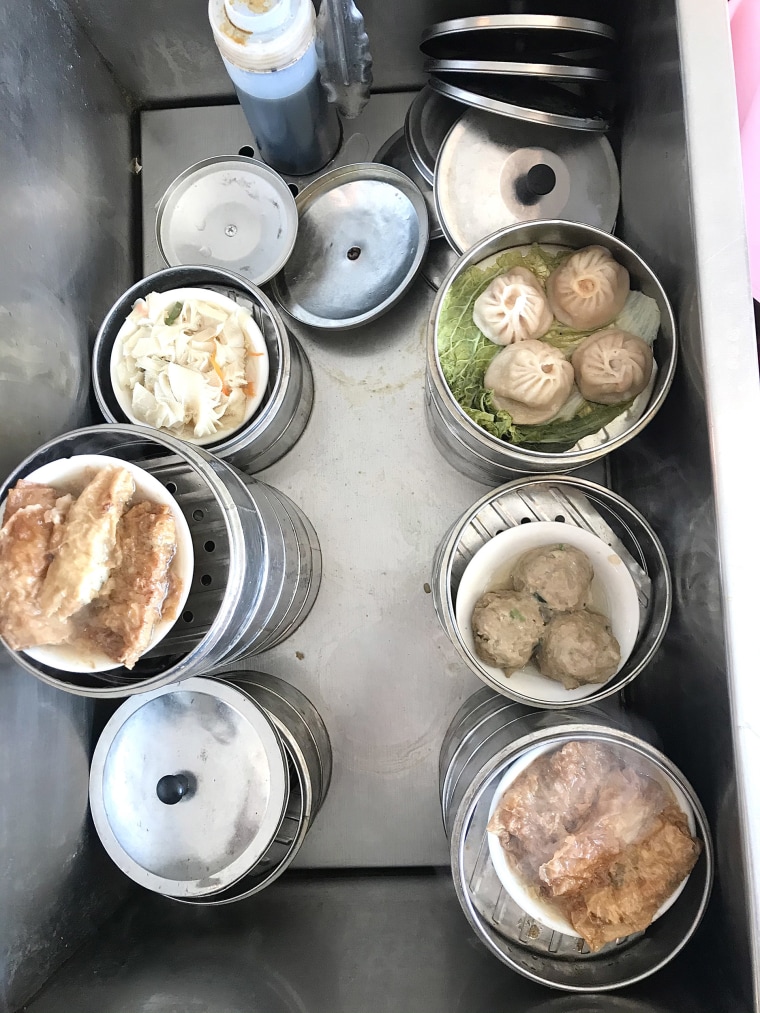
In order to get their dim sum fix during the pandemic, many folks have gotten creative. Lin recalls resorting to heating up Trader Joe’s frozen dim sum products this past year, while others attempted to make some of their favorite dim sum foods at home. But, of course, it wasn’t the same.
Everyone has their own favorite place and a place they know to take those who are new to the dim sum experience. For Lin, who lives outside of Boston, her favorite spot is Hei La Moon, but she also takes friends to China Pearl. For Chris Ma, it’s Asian Jewels in Flushing, Queens, and Golden Unicorn for friends less familiar with the dim sum. Many folks in the New York area named both Nom Wah Tea Parlor and Jing Fong in Chinatown as their go-to restaurants. Jing Fong, a third-generation, family-run restaurant, recently announced its re-opening in May 2021 after an announcement it would permanently close earlier this year due to financial strain from the pandemic.
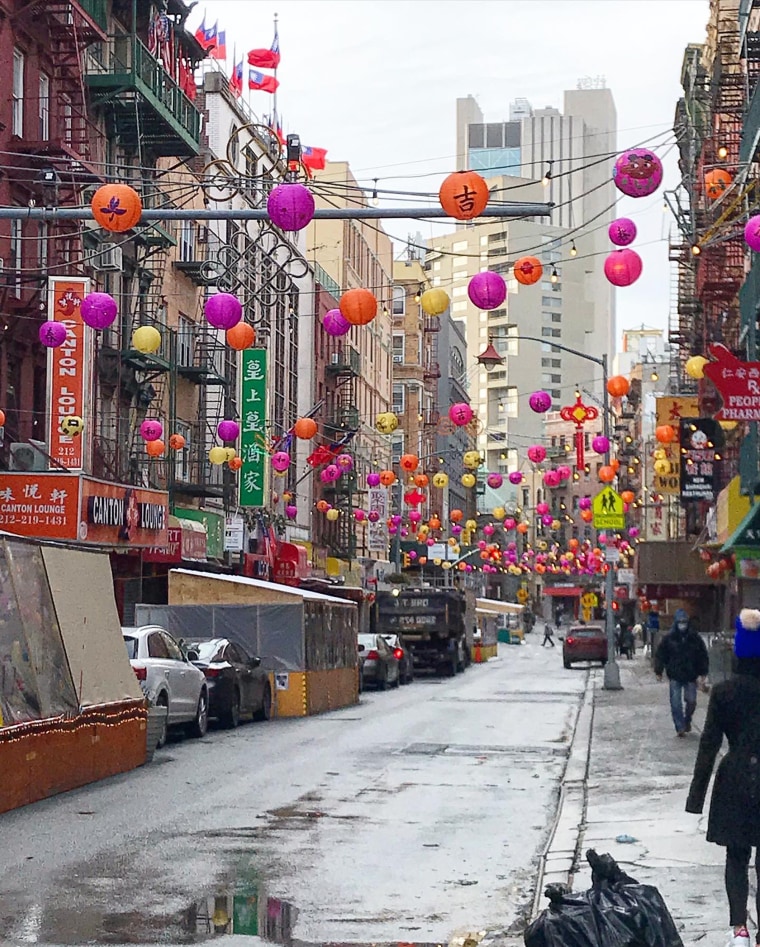
But there was definitely more than just COVID-19 threatening Chinese businesses this year. While speaking with Smithsonian magazine earlier this year, Young emphasized how Chinese restaurants across the country were taking a hit from not only the pandemic, but also racism. “One-in-six restaurants closed or on pause as of December 2020 … Misguided fears that the Chinese were to blame for the virus created an atmosphere that led people to shun Chinese restaurants," she said. "This started back in January 2020 — before this country reported even one death — and these businesses continue to suffer.”
Pam Ma expressed her own worries about the extinction of dim sum restaurants. “Pre-COVID, I noticed there were fewer and fewer dim sum places. Now, with COVID, it’s just become virtually extinct," she said. "If you think about how in the past you’d have elderly people going midday with a newspaper and tea and a couple of small dishes … With both my parents from Hong Kong, dim sum is a big part of Cantonese culture. It’s just sad to see these things fading.”
Lin said, if it survives, she believes dim sum will continue to help Asian Americans, like her, connect to their culture and pass on stories. “For me, I grew up being pretty ignorant about my cultural heritage. When I grew older and began to soul-search for my roots, I found them in the foods we had eaten," she said. "Perhaps, more than anything else, food connects our past with our present and keeps our traditions alive. If the dim sum experience was no longer to continue, a very vital Asian thread in Asian American culture would be lost."
To be able to support the survival of dim sum, as things are on a gradual ascend, there is a common opinion across the board that, until one feels confident to return to restaurants post-vaccination, they should take out.
“The safety of my customers and staff are always on my mind, but the best way to help support dim sum restaurants or any restaurant in general is order takeout or delivery," said Chris Ma. "However … a lot of dim sum restaurants are trying takeout as their only option to stay afloat, but they probably never understood the difficulty in which to implement takeout in their business. Bottom line to me is to be more understanding as a customer.”

Young suggests stocking up from your favorite dim sum places in your freezer, as many of them are still offering meal kits and food packages.
“A few restaurants are offering frozen dumplings. It’s great to stock up so that you can have several meals," she said, "Also, offer to pick up dim sum for friends or neighbors to give restaurants more business. Please pay cash and tip generously. If you pay by credit card, the restaurant has to pay a fee which means they make less money.”
Additionally, there are the many initiatives that support Chinatowns that you can donate to. Lin suggests donating to Send Chinatown Love or Chinatown Main Street.
“Search out some local organizations to help your nearby Chinatown to survive," she said. "The mixture of anti-Asian hate as well as the pandemic have decimated Chinatowns and it would be tragic for those areas with such a rich Asian American history to disappear.”
